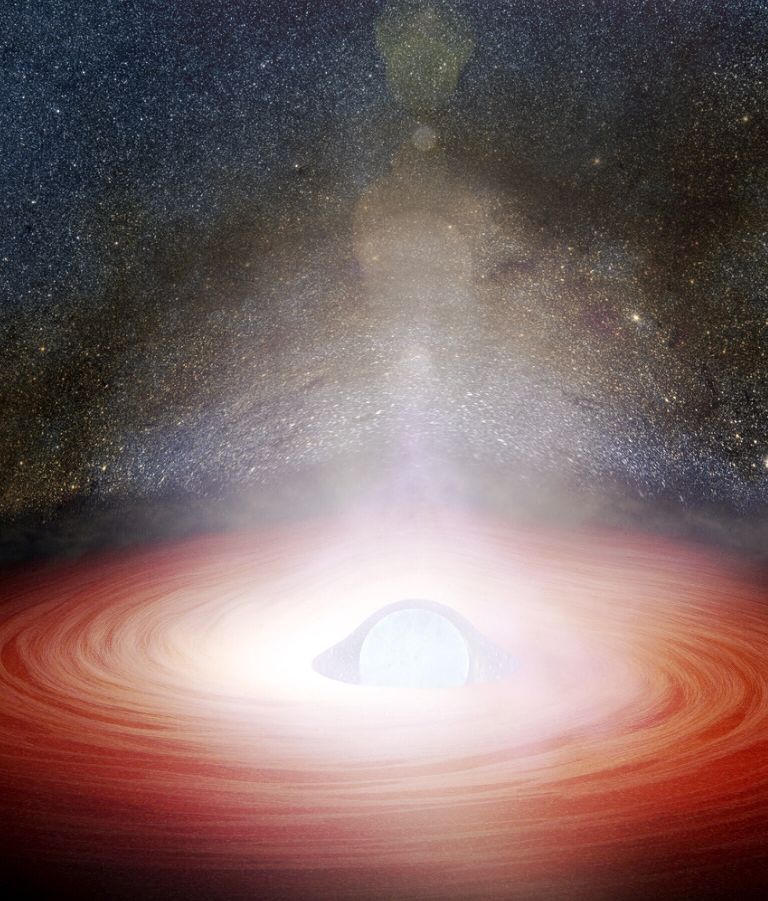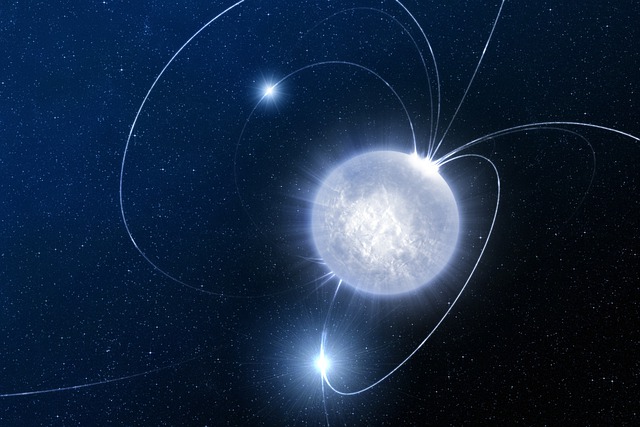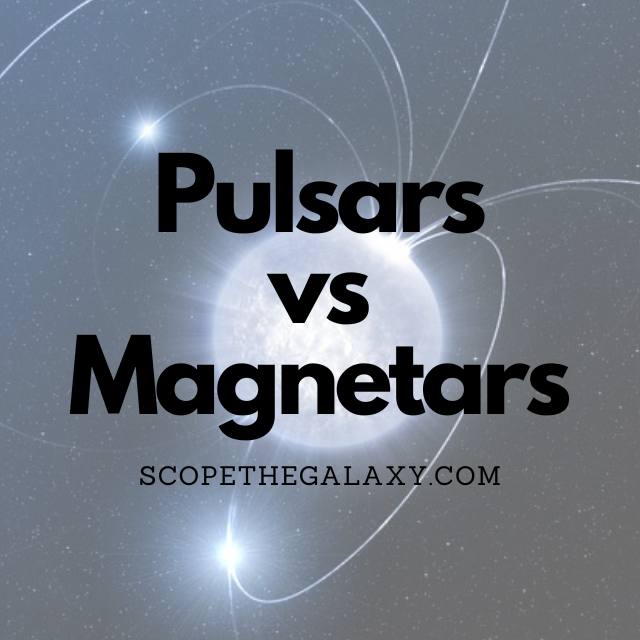*This post may contain affiliate links. This means we may make a commission if you purchase an item using one of our links*
Pulsars and Magnetars are both the remnants of a dead star, specifically those that die after a supernova explosion. The main difference between the two is that magnetars have a magnetic field roughly 1000 times stronger than pulsars.
There are also other differences such as their difference in lifespan, the strength of rays that they both emit etc. If you want to learn the differences between the two more thoroughly, continue reading.
What Is A Pulsar?
Table of Contents

One thing worth noting before delving into the specifics of a pulsar is that pulsars and neutron stars are one in the same. You could even go so far as to say that all pulsars are neutron stars but, not all neutron stars are pulsars.
In short, what differentiates neutron stars from a pulsar is down to how powerful their energy beams, magnetic field and rays are.
Just like any neutron star, pulsars are both very dense yet small, where they can range between the 20 – 25km in size yet have a mass that is 1.5 times that of the Sun.
Pulsars in essence are extremely fast rotating neutron stars that emit regular pulses of radiation within the span of seconds and even in the lower millisecond range.
The reason pulsars flicker is due to the immense strength of their magnetic field, which has been observed to be 10,000,000 T (teslas), which is a number so large that it can literally warp space and even dilate the time around them, like a black hole.
As the neutron star in this case rotates so quickly, it will open and accelerates charged particle at speeds so fast that 2 beams of extremely powerful electromagnetic waves will jet out from both its north and south magnetic axis.
This in turn means that a pulsar will be flickering or pulsating periodically where it will black out when pointing away from us and light up at the time the electromagnetic waves reach us.
If the neutron star was initially a part of a binary star system, it’s very likely that it’ll remain in orbit with the other star, using some of its energy and matter to oscillate at a much faster rate. Overtime pulsars will slow down as a result of their surroundings but, the oscillation intervals will remain consistent throughout.
Pulsars make up the majority of neutron stars we’ve discovered and will typically emit radio ways, with occasional the gamma or x-ray that is discharged also.
What Is A Magnetar?

Magnetars are simply put, neutron stars that are significantly more powerful than pulsars as they emit radiations that are a step above, emitting gamma and x-rays off its surface.
Just like pulsars magnetars are extremely small but dense, where on the upper end of their size they are roughly 24km with mass 1.5 times that of the Sun. In layman terms this means that these stellar remnants are heavier than a motherfu… you get the idea.
Although magnetic fields are more erratic than the above neutron stars, we’ve only managed to discover 31 different magnetars.
Of course based on the vastness of space, the true number is likely to be many thousands to millions times more but, it is an interesting fact nonetheless, considering how erratic these stars can be.
In regards to how strong the magnetic field of these stars are, imagine how your typical neutron star/pulsar is able to dilate time and space around but magnify that by a 1000.
Based on these numbers you could say that magnetars have arguably the most powerful magnetic fields (that we’re aware) in our universe.
It’s believed that the magnetar like state only sustains for around 10,000 years after which their magnetic field become weaker and the x-ray and gamma ray emission cease to be.
Although not confirmed the discovery of the 31st magnetar called J1818.0-1607 appears to act as both a magnetar and pulsar implying magnetars might eventually become pulsars.
Black holes may give it a run for its money but, magnetars are still amongst the top dogs, at least when it comes to the strength of magnetic fields in our universe.
To put this into perspective in 2004, rays from a magnetar roughly 50,000 light years was able penetrate deeply into Earth’s ionosphere, which is the electrically conductive layer encircling Earth.
Similarities Between Pulsars And Magnetars
Pulsars and magnetars are similar in many ways, which would include the following:
- Both are formed through a supernova explosion that is above 1.44 solar masses and below 3 solar masses which would then push it to become a black hole.
- both are formed when neutrons are densely packed together into a entity between 15 – 25km in size with solar masses that can range between 1.1 – 2.1.
- Both have surfaces that are exceedingly smooth.
- Both stars pulsate at regular intervals towards Earth.
Differences Between Pulsars And Magnetars
Although both entities are the remains of a dead star and fall under the neutron star umbrella, there are a good number of differences between the two:
- Magnetars have magnetic fields that are upwards of 1000 times that of your typical pulsar.
- Pulsars generally emit radio waves whilst magnetars emit more powerful gamma and x-rays.
- Pulsars can spin 20+ times per second whilst magnetars are much slower often completing 1 rotation every 2 – 10 seconds.
- Magnetars are believed to exist and maintain their strong magnetic field for 10,000 years after which it’s likely their emissions become less powerful and become radio waves. Pulsar are then in turn assumed to live between 10 – 100 million years.
Summary
In summary, magnetars are just pulsars but on steroids. They can be upwards of 1,000 times stronger and as a result will have a far stronger influence on its surroundings.
However, as their flames burn so bright, they do dwindle in power over time where the strength of a magnetar can diminish within a short 10,000 years whereas pulsars continue chugging anywhere from 10 – 100 million years.


Thats cool, I have a question, what would happen if a magnetar and a pulsar got near each other? Im assuming the magnetar would destroy the pulsar one way or another but its still an interesting question.
that’s a good question, my team will have to look into that to find what would theoretically happen.